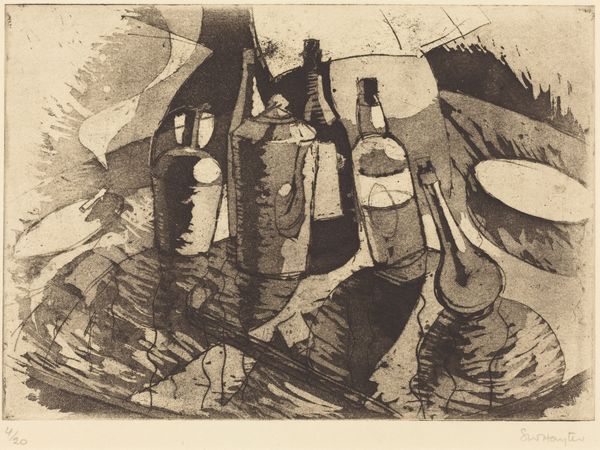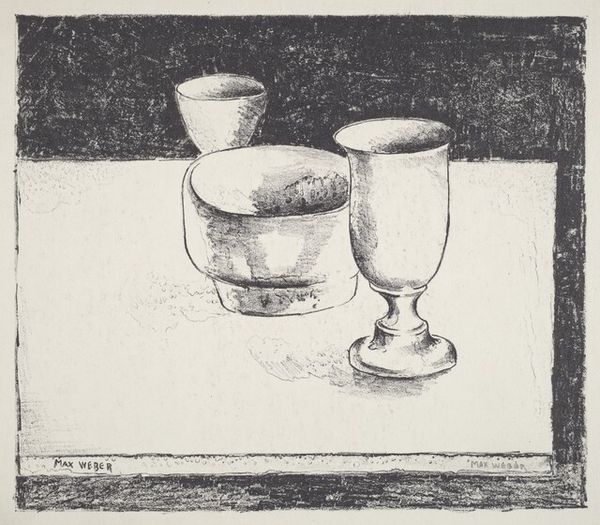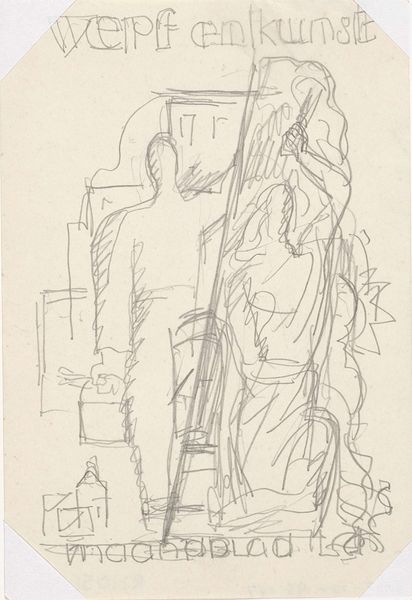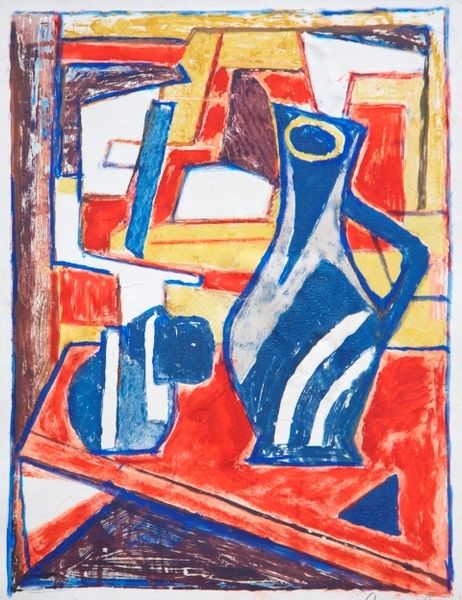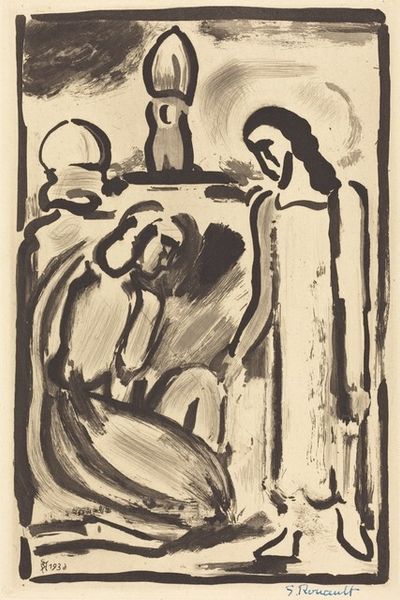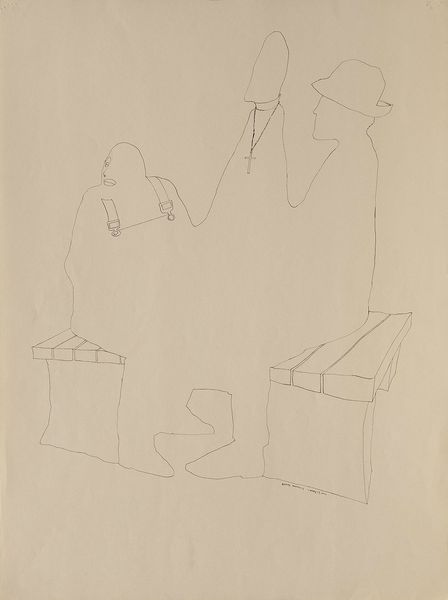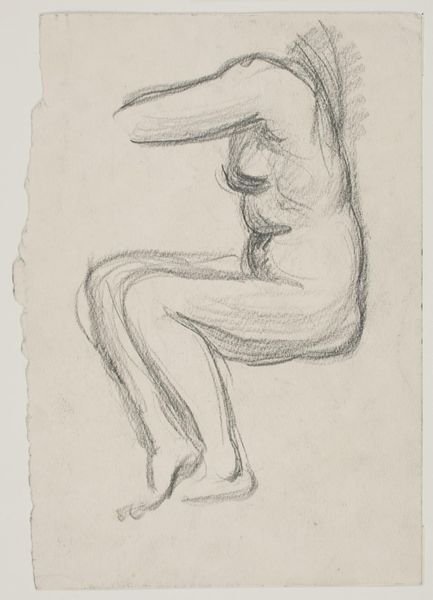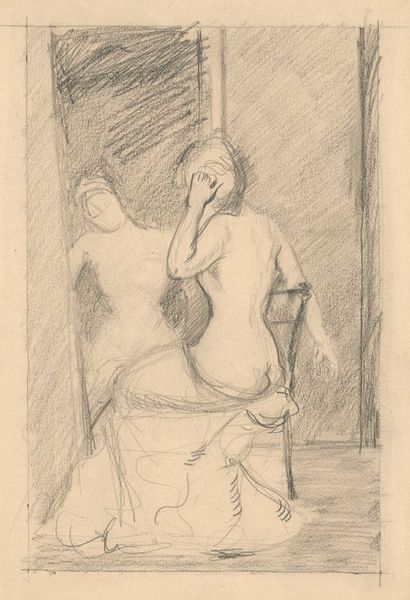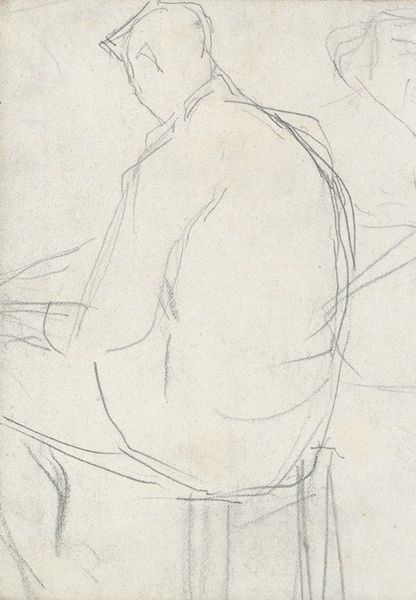
drawing, paper, pencil
#
pencil drawn
#
drawing
#
cubism
#
paper
#
abstract
#
pencil drawing
#
geometric
#
pencil
Copyright: Public Domain: Artvee
Editor: We’re looking at "Bottles and Bowl," a pencil drawing on paper created by Juan Gris in 1911. There's a subtle layering of shapes, almost like a whisper of reality. It's cubist, but softly so. What whispers to you when you see it? Curator: Whispers, yes, that's a great way to put it. The grayscale palette immediately lends a quiet introspection. Gris’s negotiation between representation and abstraction feels incredibly intimate here. I imagine him, brow furrowed, gently coaxing these geometric forms to suggest the essence of a bowl and those bottles. Don’t you find it tender, almost? It’s a dance between the visible world and his own interior landscape. He’s not just *copying*, but re-imagining. Does that resonate for you? Editor: It does, especially that "re-imagining" part. It’s not about perfect representation, but almost feeling around the object, defining it in a new way. But does it depart from other cubist works at the time, or does it still fit into the broader movement? Curator: It's undoubtedly cubist—fragmented forms, multiple perspectives—but notice how the lines are so delicately rendered, almost hesitant. Some Cubists felt the need to shock! Gris is more of a poet. He pulls back from total abstraction, lets recognizable elements breathe, inviting a quieter contemplation. Editor: It’s interesting to consider this piece as more poetic than revolutionary. I find that makes the work more accessible, strangely enough. Thanks for sharing this insight. Curator: My pleasure! Art is not some grand proclamation. Sometimes, the deepest truths emerge from the gentlest explorations.
Comments
No comments
Be the first to comment and join the conversation on the ultimate creative platform.

